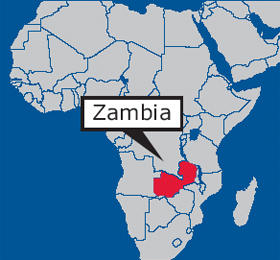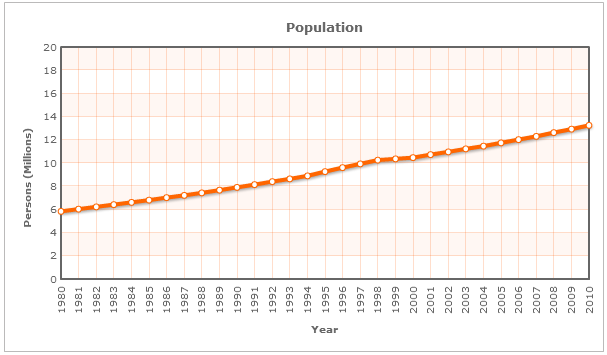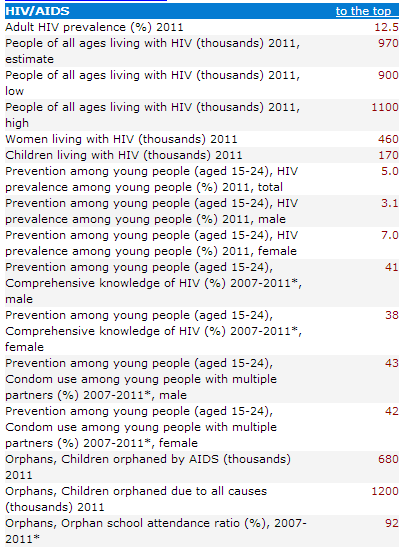Introduction: Mysterious Charm of Zambia
Zambia is by far one of the most peculiar African states. It has a unique culture and exotic nature. However, because of the health issues, Zambia will soon have to face a serious challenge. Taking the necessary measures, the state government can possibly prevent the Zambian population from shrinking. Moreover, life expectancy rates can be raised a notch.
Location and Geography: Feeling Landlocked
Unlike the states located in the coastal regions of Africa, Zambia has no access to the ocean – it is practically landlocked between Mozambique, Namibia, Tanzania, Malawi, Congo, Angola and Botswana. Partially, geographical location is to blame for the poor nursing services delivered to the residents of the state – situated between the rest of the states, Zambia has no access to the ship canals linking Africa to Europe and, thus, used to be isolated from Europe and its medical assistance.

Population: Fourteen Million of People in Need
According to the data obtained from the recently conducted Census, the population of Zambia makes 12,817,279 as per July 2012 calculations (Zambia population, 2012).

As the table shows, the Zambian population has been growing increasingly over the past decade, which is likely to be the key factor of poverty within the state.
Government: Multi-Party Democracy
Since Zambia has established democracy as its key political principle comparatively recently, it is quite understandable that the introduction of the new principles is going to be long and painstaking. As Bandow explains, “Zambia, like many African nations, suffered a dearth of democracy while gaining statehood” (Bandow, 2013). At present, the key principle of the Zambian statehood is multi-party democracy. However, unless the Coalition for the Defense of Democratic Rights gains more support, democracy in Zambia will be under a considerable threat.
Economy: In Search for Copper
As it has been mentioned above, the geographic isolation does not work in favor of Zambian politics and economy. To make the matter worse, the state lacks natural resources. At present, Zambia survives owing to the export of copper from its famous Copperbelt Province (Sutcliffe, 2012). It is worth mentioning, though, that these resources are exhaustible. Therefore, it will not be long when poverty in Zambia leads to a catastrophe.
State of Health: HIV Threat
Unfortunately, poverty is not the only problem in Zambia; the residents of the state have much more complicated health concerns. As the recently acquire data says, in 2011, the number of Zambians infected with HIV or having AIDS peaked to 1,100,000 (UNICEF, 201).

As the given table shows, children in orphanages fall into the risk group. Therefore, it is reasonable to suggest that the HIV/AIDS literacy campaign mentioned above should start with children with an unfavorable background.
Culture: When Bantu Meets Europe
As it has been stressed above, Zambia has gone through a relatively painful change of its state structure, moral principles and philosophy in the middle of the XX century. In addition, Zambia has started a communication process with Europe, which has led to a cultural change. As a result, at a certain point, Zambia was at the crossroads of losing its national identity or adapting to the new style of life.
Choosing the latter, Zambia has turned into a mixture of cultures. On the one hand, the “one Zambia, one nation” (Mwalimu, 2009, 556) principle still shapes the lives of the Zambian population in term of art and customs. On the other hand, the elements of European culture, such as the growth of urbanization, can also be spotted.
Traditional Medicine: Promoting Good Health
As Bansal explains, at present, the state receives medical support from European states and the USA, which leads to abandoning the use of traditional medicine by most professionals. However, due to a lack of trust given to the innovative methods of treating HIV/AIDS and other diseases among the native population, most people, especially in rural areas, tend to use the services of local healers (Bansal, 2012). As Bansal (2012) clarifies, in most cases, “traditional medicine” means using herbs and roots of various plants to create medicine for patients. The introduction of European pharmaceutical standards, therefore, causes confusion: “The national office on TM/CAM is split between a desk for traditional medicine practices and a component of the National Drug Policy Analysis office on traditional and herbal medicines” (World Health Organization, 2005, 73).
On the one hand, traditional medicine often proves inefficient in fighting diseases. However, it still must be admitted that traditional medicine promotes the idea of taking good care of one’s health. In addition, Bansal makes it clear that a number of doctors using pharmaceutical methods of curing diseases in Zambia resort to the services of traditional medicine specialists. Therefore, the latter can advise the patients to visit modern medicine doctors in case of a problem that needs pharmaceutical treatment. Therefore, in some sense, traditional medicine does contribute to the growth of pharmaceutical medicine influence.
Healthcare System and Delivery: Human Resources and Road Accidents
According to Bansal, the key causes of high mortality rates in Zambia are the lack of healthcare personnel, high rates of HIV/AIDS contraction and even higher rates of road accidents (Bansal, 2012).
Governmental health-related agencies: Ministry of Community Development, Mother and Child Health
It would be wrong to claim that the Zambian government is sitting twiddling their thumbs. Over the past few years, several organizations have been created to coordinate the health issues around the country. ZANARA is one of such agencies; a joint project that Zambia has been working on with the USA for several years running, it seems to be offering sufficient financial help for the Zambian HIV/AIDS victims: “ZANARA, through the Zambia Social Investment Fund, supports community responses to HIV/AIDS through the CRAIDS initiative, which directly funds activities of CBOs and facilitates interventions by FBOs and NGOs” (Resch, Lee, Kombe & Sinyinza 2008).
However, the measures adopted by the local agencies often backfire due to carelessness in delivering healthcare services, For instance, in 2013, the Zambian government finally took care of the exponential population growth and high rates of HIV/AIDS among people by importing cheap yet effective birth control items. However, local business frauds took their chance to produce and sell fake condoms, which resulted in derailing the fight against HIV/AIDS (Mwizabi, 2013).
Health regulatory organizations: ZOOHS and Co.
Apart from ZANARA, there are several health organizations that help the Zambian population maintain a relatively favorable state of health and provide access to the required medicine; these are ZNAHI (Zambia National Association of Hearing Impaired), ZOHSA (Zambia Occupational Health and Safety Association), and ZOOHS (Zambia Organization for Occupational Health and Safety) (USAID, 2006, viii).
Despite the fact that the organizations listed above are not regulated by the Zambian government, they manage to provide very decent results. It is also important to mention that the organizations listed above differ considerably in the services that they provide; for instance, ZNAHI deals only with the instances of health problems caused by workplace noises or any other factors that can lead to the loss of hearing, while the rest of the organizations deal with broader issues. Overall, it can be considered that the Zambian non-governmental organizations provide as many opportunities as the state ones, if not more.
Healthcare personnel: statistics
Even though WHO finally started a vast project concerning the analysis of the Zambian population’s health state and the means to fight high rates of HIV/AIDS, the situation still remains drastic, mostly due to the lack of professionals. Living in a state with extreme rates of poverty, many people cannot afford higher education and, therefore, cannot join the ranks of doctors. WHO, in its turn, cannot send endless supplies of specialists. At present, the Zambian statistics on health care personnel looks the following way, according to AHWO (2010):
Table 1. Total health workers and densities in 2010 – Zambia
AHWO (2010). Total health workers and densities in 2010 – Zambia.
It should also be mentioned that in Zambia, 80% of the personnel are employed in the public sector, while the private one makes 20% of the healthcare specialists. As the table shows, there is a drastic lack of personnel in Zambia; with an average of 0.27 per each patient, there are few chances that the problem of each patient is going to be properly addressed.
The nursing education system and accrediting organizations
In 2012, a nursing education system has been launched in Zambia. As Dr. Kasonde, a Zambian specialist, said, “The help from the American government through NEPI could not have done better than this” (ICAP, 2012). However, the results of the program are yet to come.
Nursing associations: ZNA leads the way
At present, the Zambian Nursing Association remains the stronghold of Zambian nursing education.
Health Priorities: Child Health and Human Resources
As it has been stressed above, at present, high rates of HIV/AIDS among children and the lack of specialists in healthcare must be addressed.
Nursing Implications: Taking the Necessary Actions
To solve the current issues, one will have to provide opportunities for medical education for the Zambian population. Thus, not only disease awareness will be spread, but also healthcare progress will rise.
Conclusion: There Is Still Much to Be Done
While at present, the situation concerning Zambian healthcare leaves much to be desired, the proposed plan seems quite efficient. Since one of the major problems at present is the lack of personnel within the nursing field, it can be assumed that education issues should also be brought up. By training the Zambian students to become professional doctors, one can possibly expect improvements. In addition, the use of traditional medicine should be encouraged, seeing how the use of alternative one often leads to the patient’s death.
Reference List
AHWO (2010). Total health workers and densities in 2010 – Zambia. Web.
Bandow, D. (2013). Democracy is under challenge in Zambia. Web.
Bansal, S. (2012). Doctors in Zambia Use traditional healers to promote good health. Web.
Bansal, S. (2012). Zambia’s healthcare system in need of an MOT as road accidents increase. Web.
ICAP (2012). Launch of nursing education partnership in Zambia. Web.
Mwalimu, C. (2009). Seeking viable grassroots representation mechanisms in African constitutions. New York, NY: Peter Lang. Web.
Mwizabi, K. (2013). Zambia: Fake condom influx derails HIV/AIDS fight. Web.
Resch, S., Lee, M., Kombe, G. & Sinyinza, E. (2008). Sustainability analysis of HIV/AIDS in Zambia. Bethesda, MD: Health Systems 20/20 Project, Abt Associates Inc. Web.
Sutcliffe, J. (2012). Abjection and resistance of the Zambian Copperbelt. Web.
UNICEF (2011). HIV/AIDS. Web.
USAID (2006). Strengthening human resources for health. Web.
World Health Organization (2005). National policy on traditional medicine and regulation of herbal medicines. Web.
Zambia (2009). Web.
Zambia population (2012). Web.